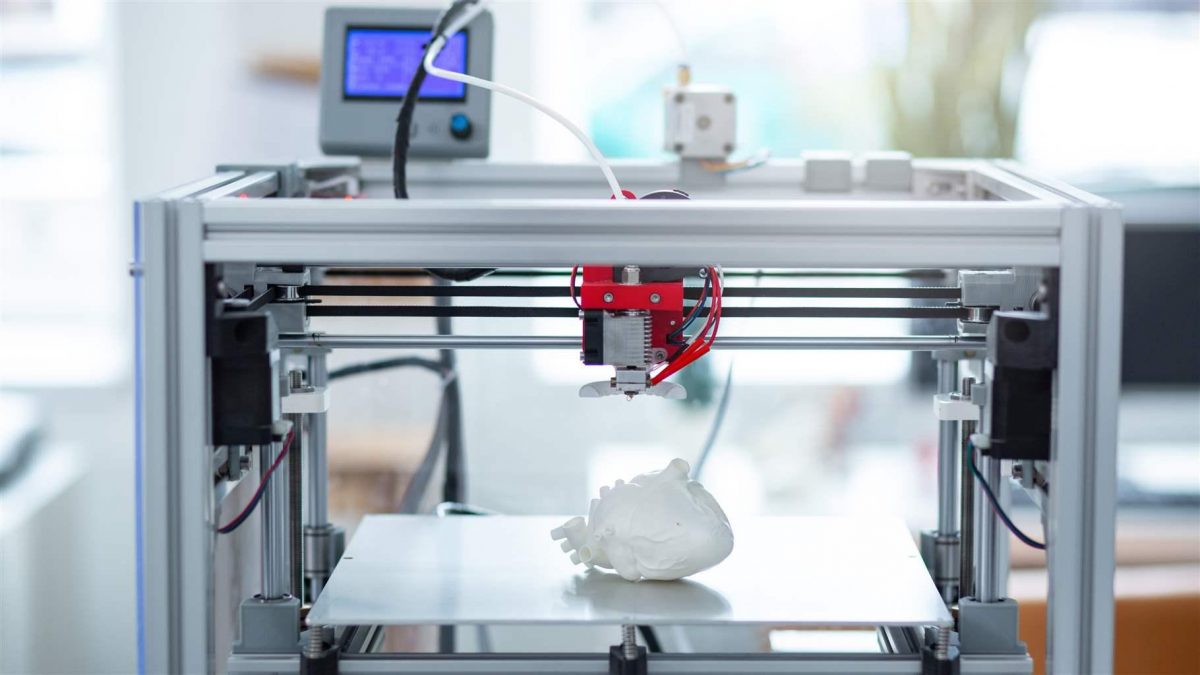In recent decades, the method of 3D printing has revolutionized prototyping and found applications in many different industries (Tack et al., 2016). With 3D printing, a three-dimensional object can be created using a computer-generated design that is built layer by layer (TWI, 2022). One such industry that is starting to benefit more and more from this method is the medical sector, where it is widely used for medical purposes. Here, the 3D printing method enables applications in various disciplines such as anatomical models, surgical guides, and implants (Tack et al., 2016) and is expected to overcome the limitations of traditional methods (Yan et al., 2018).
In the world of 3D printing, the capability to manufacture new parts, maintain a digital stock of replacement parts and even repair components have proven to be very useful in industries such as the automotive- and aerospace industry. For the medical world, on the other hand, 3D printing offers incredible opportunities to improve people’s quality of life and even save lives (Saunders, 2022). In particular, 3D printing technology is useful when it comes to replacing human organ transplants, speeding up surgical procedures, manufacturing cheaper versions of required surgical instruments and improving the lives of people dependent on prosthetic limbs (Nawrat, 2018). Likewise, 3D printing technology offers opportunities to build bionic tissue or organs and may even solve the donor shortage problem (Yan et al., 2018).
Consequently, the technology enables more customization and automation, but also leads to cost and time savings for hospitals and patients. Previously, patients would have to wait in the hospital, for example, whenever a personalized product was manufactured for them. The 3D printing technology, however, makes it possible to quickly print the necessary components to fit the patient’s needs, saving the patient money by shortening their stay (Saunders, 2022). Additionally, the medical sector has been under intense pressure for some time when it comes to optimal performance and lower costs, therefore it is expected that as this technology develops, the medical world will experience unprecedented benefits from 3D printing (Aimar. Palermo & Innocenti, 2019).
References
Aimar, A., Palermo, A., & Innocenti, B. (2019). The role of 3D printing in medical applications: a state of the art. Journal of healthcare engineering, 2019.
Nawrat, A. (2018, August 7th). 3D printing in the medical field: four major applications revolutionising the industry. Medical device network. Retrieved from: https://www.medicaldevice-network.com/analysis/3d-printing-in-the-medical-field-applications/
Saunders, S. (2022, January 31st). 2022 Predictions: Medical 3D Printing Is Disrupting Healthcare. 3D Print. Retrieved from: https://3dprint.com/287679/2022-predictions-medical-3d-printing-is-disrupting-healthcare/
Tack, P., Victor, J., Gemmel, P., & Annemans, L. (2016). 3D-printing techniques in a medical setting: a systematic literature review. Biomedical engineering online, 15(1), 1-21.
TWI. (2022). WHAT IS 3D PRINTING? – TECHNOLOGY DEFINITION AND TYPES. Retrieved from: https://www.twi-global.com/technical-knowledge/faqs/what-is-3d-printing#:~:text=3D%20printing%2C%20also%20known%20as,to%20create%20a%203D%20part.
Yan, Q., Dong, H., Su, J., Han, J., Song, B., Wei, Q., & Shi, Y. (2018). A review of 3D printing technology for medical applications. Engineering, 4(5), 729-742.


Very interesting piece about the disruptive technology called 3D-printing. I’m curious to know the costs against the benefits from 3D printing. As printing bionic tissue or organs seems to me to be rather difficult for a 3D printer these costs would match the level of difficulty as well. Besides the fixed costs there will also be the variable costs for printing the desired ‘end products’. Do you have any idea about these costs. A quick search on Google provided me with the information that a 3D printer can cost as much as 50 thousand dollars. Will it also be necessary for every hospital to have a 3D printer on location in order to help the patients in the best way as possible?
I agree with you that the possibilities for 3D printing are endless. Imagine being able to solve the donor shortage problem and being able to solve highly personalized fixes which weren’t possible without this beautiful technology.